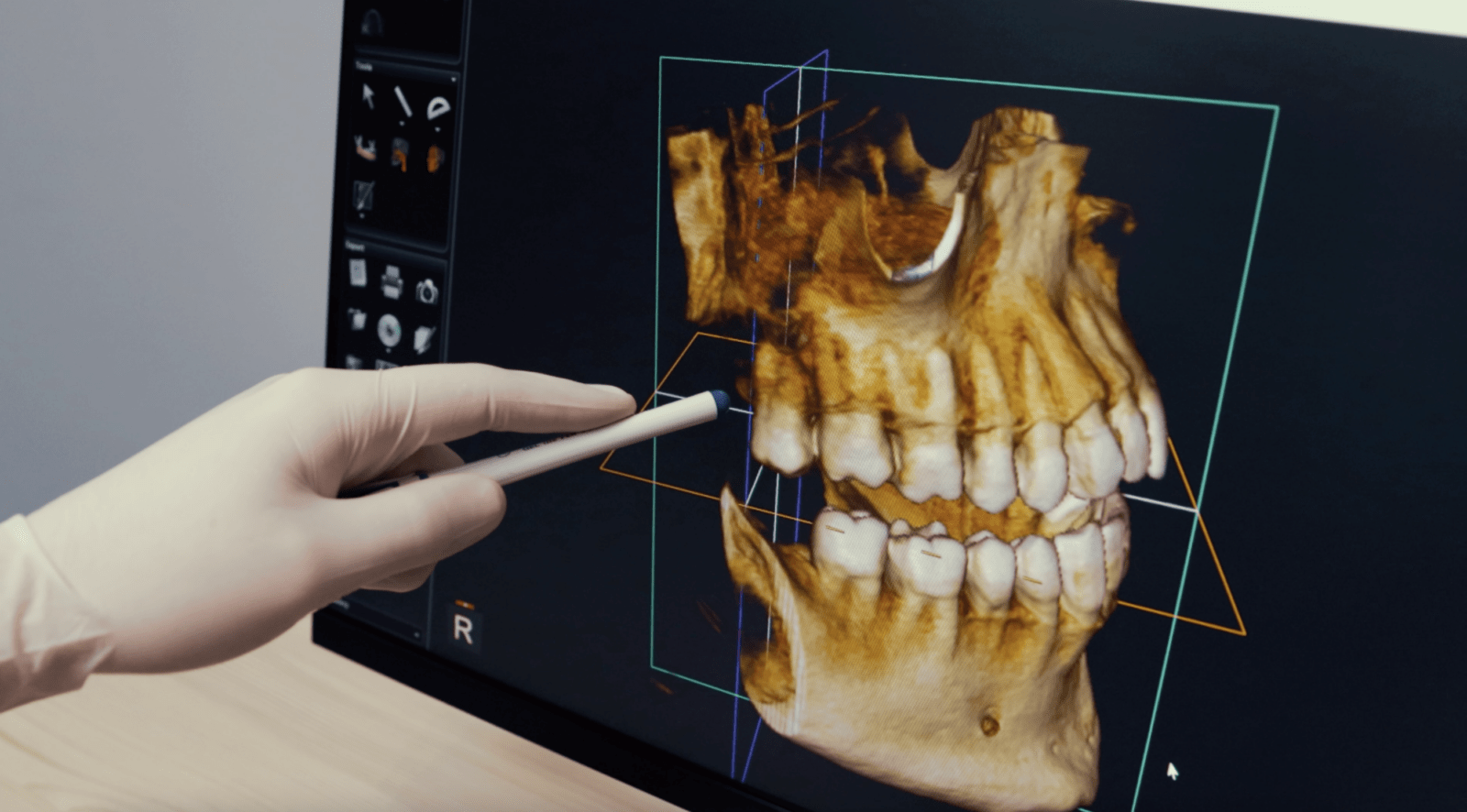
Hello, friends! I am Danielle, the x-ray technician at Hinsdale Ortho. I am helping answer all the FAQ’s about our super awesome CBCT i-cat FLX X-ray machine that we have in our office today. To start off let’s ask the following question:
What does CBCT stand for and what does it do?
CBCT stands for Cone Beam Computer Tomography, and uses an iCat machine. A CBCT in our office allows us to take 3D images of the teeth, jaws, bones, and facial structure with less energy than a typical CT scan used in hospitals. We can also look into patients’ airways, tonsils, sinuses, and more. Having this information from our x-ray gives us the tools we need to help diagnose our own condition and refer to other professionals for further diagnosis, if necessary. This tool ends up being great!
What do I have to do as a patient?
Don’t worry! I will instruct you on how to sit and what to do before I take the x-ray. The i-cat FLX (CBCT) is one of the few devices that allows you to sit while being scanned, which makes it quite pleasant for the patient. The sitting posture allows for the least amount of patient movement, which reduces the need for extra radiation and retakes while being comfortable, which is great. Our scan is quick and effective since it only takes 4.8 seconds and uses a 2-second exposure! Small children who want to roam about can remain motionless for fewer than five seconds. I Love That!!
What’s the difference between a CT and a CBCT?
The main difference between the two scans is the method by which x-rays are emitted from the x-ray source. A CBCT uses a cone-shaped beam for medical imaging, whereas a CT scan uses a fan-or spiral-shaped beam. A CBCT takes less time than a spiral/fan CT scan and covers a larger region in a cone-shaped pattern. A CBCT will only need one scan of the maxilla and mandible, which will expose the patient to 200 – 300 times the radiation needed for a CBCT. A CBCT that simultaneously scans the upper and lower jaw reduces exposure. If both jaws are scanned individually, the exposure will be doubled.
Fun fact!
Our i-cat FLX machine (CBCT) uses around 11-24 uSv (MicroSieverts) depending on the treatment, which is around 18x less radiation exposure than a roundtrip from NY to Tokyo!! CRAZY!! The normal daily dose of natural background is 10 uSv. For more information on our super cool CBCT machine, you can visit the links below for a better smile ????!
i-CAT FLX V-Series: Henry Schein
Contact Us Today!
If you or someone you know is looking for one of the best orthodontist in Hinsdale, or any of the surrounding areas, give us a call today at 630-325-0100 or by filling our THIS FORM to schedule your free consultation!

